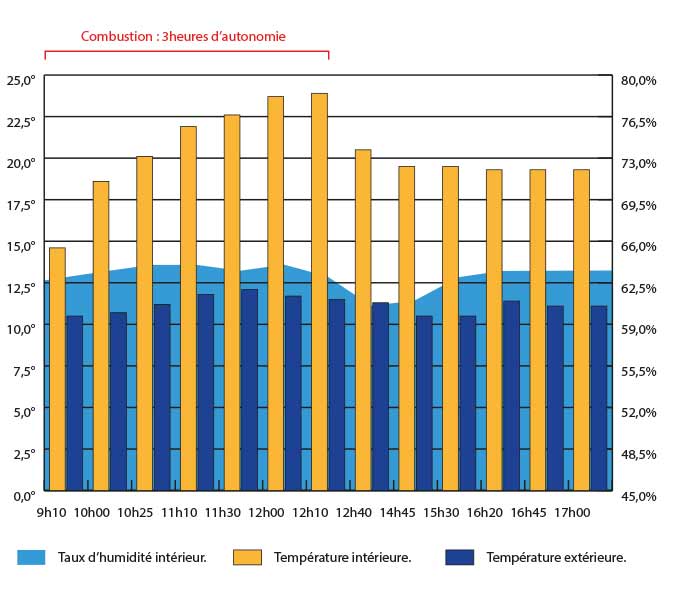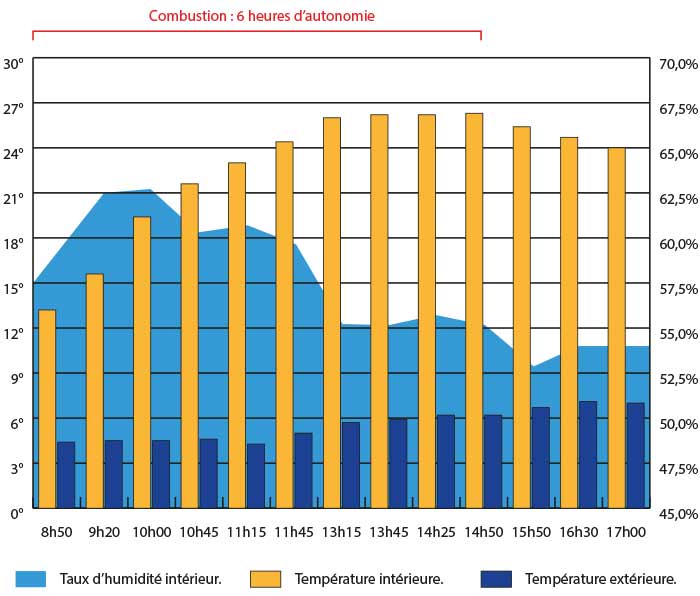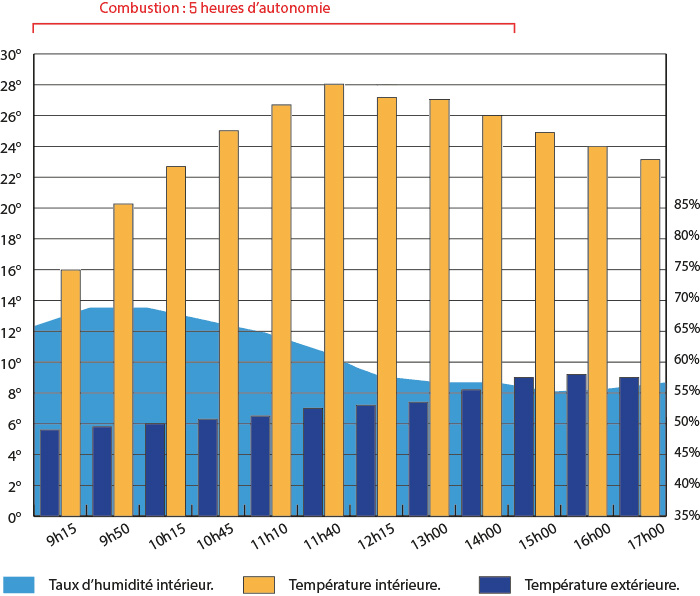Test: the heating power of ethanol burners
We are regularly called by customers. Redundant comments: "I'm interested in your ethanol fireplaces because I'm looking for something decorative, I don't want to heat. In any case, your products don't heat up". While it's clear that with ethanol you're opting for a heating system with high decorative power, is the same true when it comes to heating capacity? We decided to look into this question by carrying out two tests with our 1.8L/3.3kW double-walled combustion unit, without any other source of heat in the room.
Test conditions
The test was carried out in a standard room measuring 23 m2, about the size of a living room. We will regularly measure the room's humidity and temperature, as well as the outside temperature. We'll be using various burners, which are also standard - in other words, they have the same capacity as the vast majority of fireplaces we sell.
Why talk about humidity?
First of all, for the sake of completeness: heat is an element of comfort, as is the overall humidity of the room. Like temperature, humidity has a comfort zone estimated at between 45 and 70%. It is also often said that burning ethanol tends to produce a lot of water vapour, and therefore humidity.
1.5L/2700 watt burner

This first burner is found in many of the fireplaces in our shop. It is perfectly suited to the size of the room (23m2) in which it develops its full potential. We can see its performance here: it enabled us to save just over 10° in room temperature, throughout the three hours it was autonomous. The humidity level remained stable, although there was a noticeable increase at the start of the test.
1.5L/3000 watt burner

This second burner is slightly more powerful than the first to be tested: it is therefore inevitably a little more powerful, but it also has two new features. Its autonomyis greater (5h50) and its power is more spread out over time, so you'll be warm for longer. Humidity rises by 10% in the first two hours, returning to the initial level at the end of the test.
What's the point of having two 1.5L burners?
We've just tested two burners with similar fuel tanks. Let's take a closer look at the advantages and potential of each model, using the various elements below.
The image above shows the two burners, the larger being the 3kW, the smaller the 1.5L 2.7kW.

Finally, their power curves show that the 2.7 will heat the room more quickly, but that the 3kW will heat for longer. The two can be used for different purposes: for example, the 2.7 can be used in the evening, when the need for extra heat is not necessarily long, while the 3kW is a good choice for use during the day, when extra heat is needed for a longer period.
Testing the 2L/3.5kW burner
We decided to test this burner in two stages. The first time at full power, the second at half power.
At full opening

Although our burners are adjustable, we first let the burner burn at full power. Here's what we found:
- 5 hours of autonomy: the flames start at 9.15am, and continue until 2.15pm.
- A rapid rise in temperature: before combustion, the room is at a temperature of 15°. After an hour's use, the temperature is 21°. The heat peaks at 28°C in the middle of combustion.
- Relatively stable humidity: Before combustion, humidity is 65%. The humidity peaks at 10.15am at 68%. The humidity then falls slowly throughout the day, fluctuating between 60 and 55%.
- The outside temperature: the test was carried out on a fairly mild day, with the temperature recorded as fluctuating between 5.6° and 9°.
It can therefore be seen that full power is unnecessary for a standard room, and that a burner of this type can be used either at half power, or to heat a larger volume.

